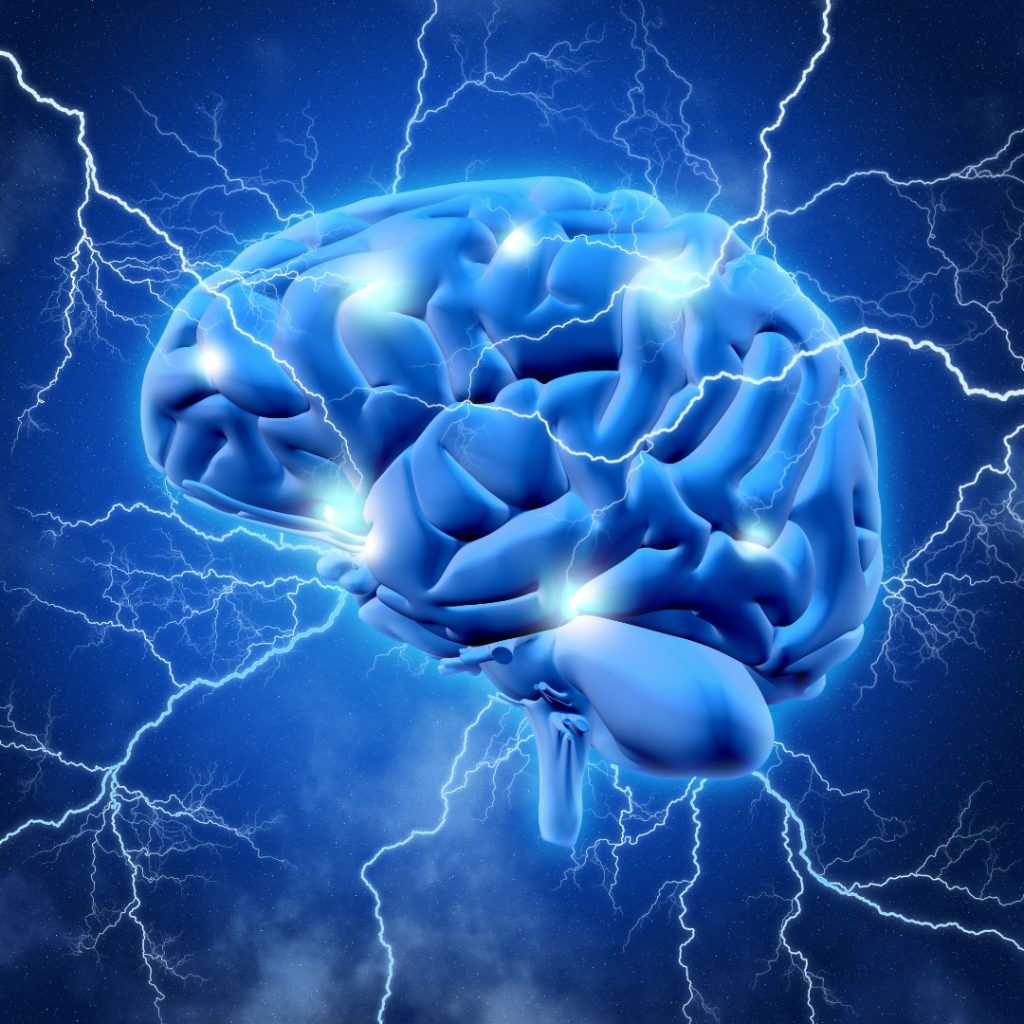Imagine you went for a walk inside your brain. You look to your right to see some nerve cells/neurons busy doing their work moving your arm. You look to your left and you see some other neurons thinking about what you’ll be having for diner later tonight, and all of a sudden, you hear a loud noise. You turn your head to see some neurons arguing together, refusing to do their assigned tasks and shouting loudly at the same time. That is exactly what happens during an epileptic seizure.
Epilepsy is a neurological disorder affecting more than 50 million people worldwide, and it is defined as the occurrence of multiple seizures due to malfunction of some neurons in the brain causing them to fire synchronously.
But what is a seizure?
Let’s go back to the basics. If we take a look at any neuron in the brain, we’ll find two types of neurons acting on it to control its function. The first one is called an Excitatory neuron, that when fired, activates the neighboring nerve cells. While the second is called an inhibitory neuron, which stops those neurons from working. These two different types of neurons work together in a balanced manner to coordinate the work of other nerve cells. Neurons in the brain communicate to each other through chemicals known as neurotransmitters, and so, the excitatory neurons release excitatory neurotransmitters as glutamate, while the inhibitory neurons release inhibitory neurotransmitters as GABA. So what happens during a seizure is one of two things: either the excitatory neurons fire more than needed or the inhibitory neurons fire less than usual and both situations cause other neurons to fire more than they normally would, and while the neuronal error is usually quite the same, the seizure itself can have multiple different presentations.

For example; if the neurons malfunction and over fire in one localized area of the brain, the seizure appears on the body part controlled by it, like unintentional arm movement or even perception of weird smell and these would be called a Focal Seizure. However, if the neuronal malfunction spreads across the brain, or is already all over the brain from the start, the seizure shows all over the body and this may present in multiple different ways, the most common is the Tonic Clonic Seizure (also known as Grand-mal), which presents as loss of consciousness and muscle tension followed by rhythmic muscle contractions all over the body. Also, children sometimes present what is known as Absence Seizure/petit-mal; where a child all of a sudden pauses – then goes back to what they were doing without even remembering that a seizure happened.
Causes & Treatment
There are multiple different causes of epilepsy; from genetic disorders, to tumors, trauma, or even brain infection. Yet, in most of the cases, the cause remains unknown. That is why the treatment usually aims mainly at controlling the seizures, which is done primarily using medications known as anti-epileptic drugs. These drugs work in multiple different ways; such as enhancing the function of inhibitory neurons by increasing the production of GABA and amplifying its action, while some other drugs suppress the action of excitatory neurons by blocking glutamate receptors/action sites and both of these mechanisms prevent the neurons from rapid repetitive firing. However, epilepsy can also be treated surgically. When a specific cause for the seizures has been identified; such as a tumor or when the seizures are of the Focal type and the neurons causing the disease are located.
Finally, with recent technological advances, a device called Responsive Neuro-Stimulator (RNS) has been used to treat patients with epilepsy not responding to drug treatment. The device is implanted within the brain, continuously monitoring the activity of the neurons. When it senses an increase of neuronal firing, the device produces an electric impulse, resetting the neurons, and preventing the seizure before it even happens at all.
Epilepsy is one of the most common neurological disorders and that is why it is important for all of us to know how to act if we see someone having a seizure. All you have to do is:
- Put that person in a recovery position and make sure to time the duration.
- If it continues beyond five minutes, quickly call an ambulance.
- Never put anything in their mouth, and move any sharp object away.
- Stay calm till the seizure ends, and reassure them that everything is going to be okay


